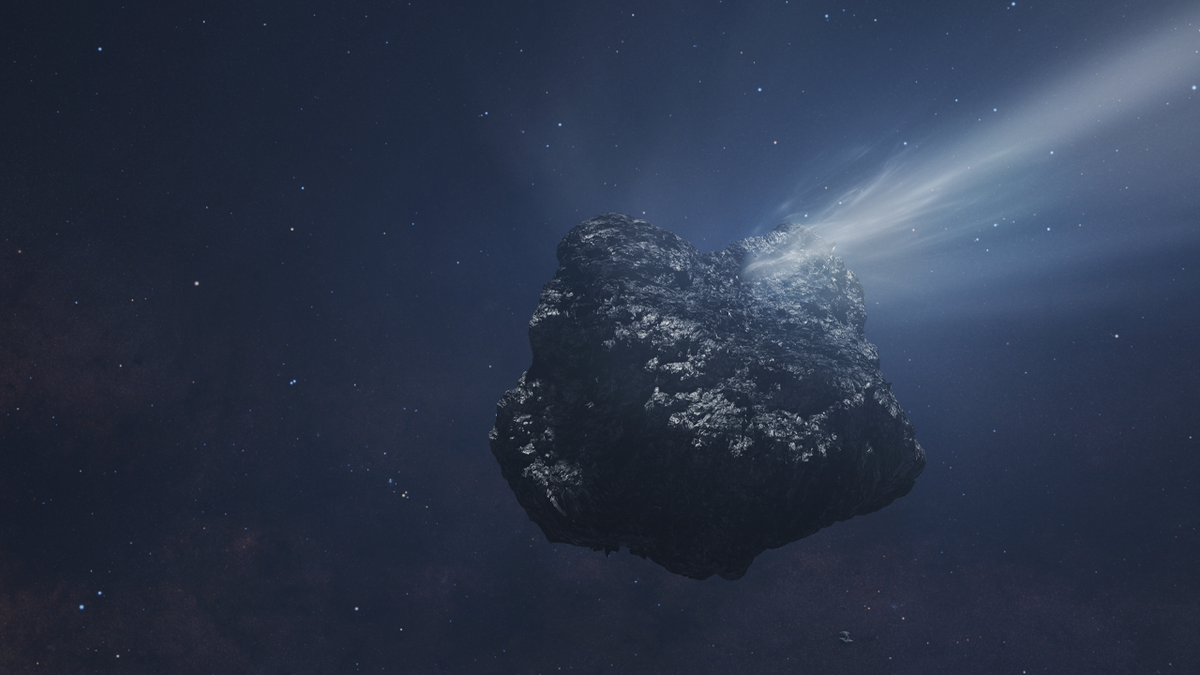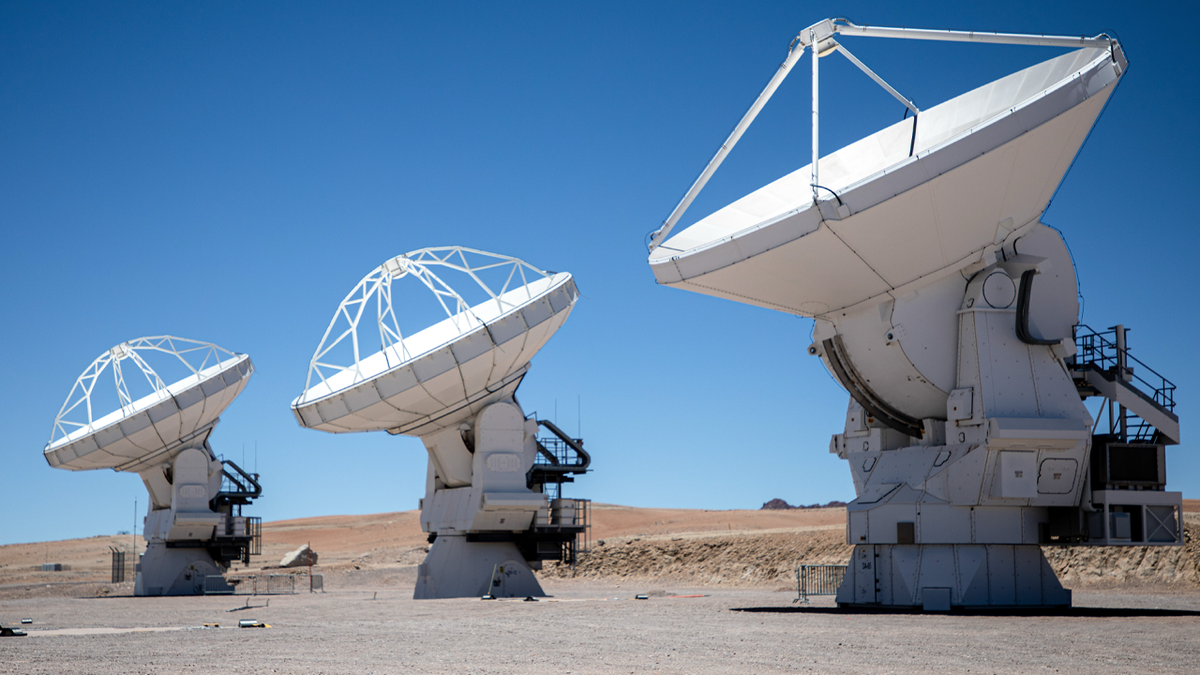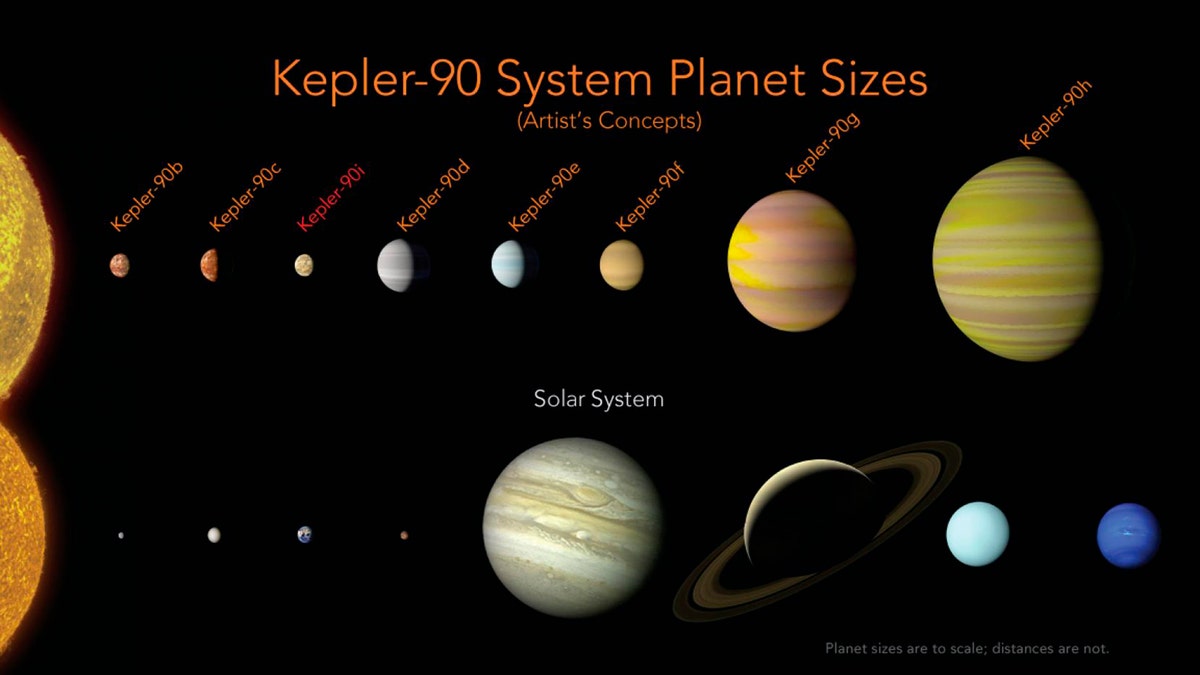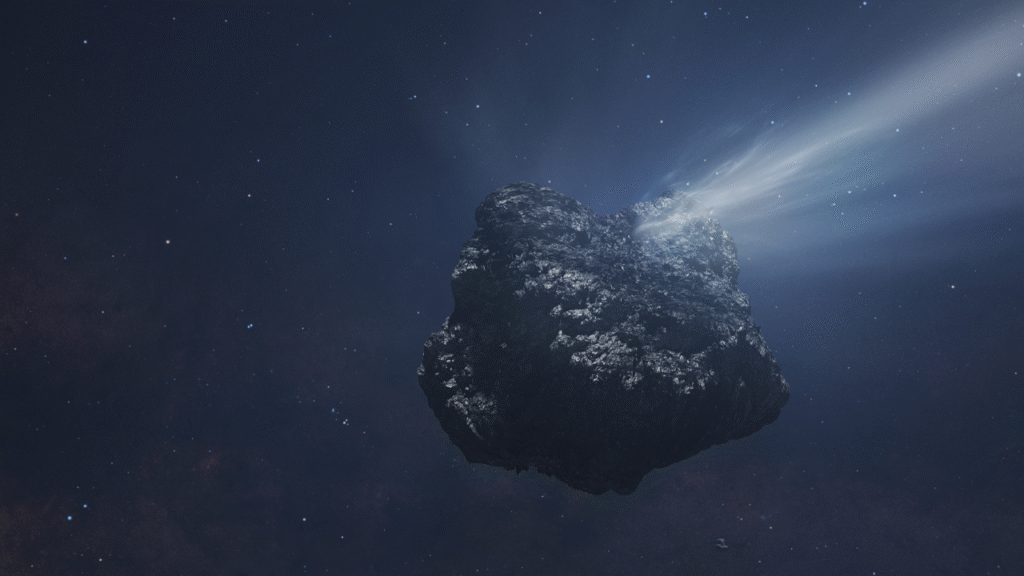NEWYou can now listen to Fox News articles!
A significant discovery has been made regarding the largest comet ever seen, which is currently heading toward the sun from the Oort Cloud located in the outer part of our solar system.
Using the powerful Atacama Large Millimeter/submillimeter Array (ALMA) radio telescope in Chile, astronomers observed C/2014 UN271, allowing them to get a closer look at this comet traveling through space.
This gigantic icy body spans 85 miles and is over ten times larger than any previously known comet, according to the National Radio Astronomy Observatory (NRAO).
The NRAO reported that new findings revealed jets of carbon monoxide gas shooting out from the comet’s solid icy core.
SCIENTISTS DETECT MYSTERIOUS RADIO WAVES FROM UNDER ANTARCTIC ICE

An artist’s illustration of comet C/2014 UN271, the largest known comet in the Oort Cloud. (Credit: NSF/AUI/NSF NRAO/M.Weiss)
According to a statement from the NRAO, researchers located the comet well beyond Neptune, approximately 17 times further from the sun than Earth.
Thanks to ALMA’s high sensitivity and resolution, scientists could analyze the carbon monoxide and heat released from the comet.
POTENTIAL DISCOVERY OF A NEW DWARF PLANET ADDS A TWIST TO PLANET NINE THEORIES

Astronomers observed the C/2014 UN271 comet using the Atacama Large Millimeter/submillimeter Array radio telescope in Chile’s Atacama Desert. (Lucas Aguayo Araos/Anadolu Agency via Getty Images)
Nathan Roth from American University and NASA’s Goddard Space Flight Center, the lead author of the study published in the Astrophysical Journal Letters, explained that these insights enhance understanding of this icy rock traveling through space.
“These measurements allow us to see how this massive, icy entity functions,” Roth stated. “We’re observing explosive outgassing patterns that prompt new inquiries about its evolution as it journeys toward the inner solar system.”
Combining prior ALMA observations with the latest results, researchers could accurately measure the comet, analyzing its thermal signals to gauge its size and the amount of dust surrounding its core.

This illustration from NASA compares the planets in our solar system to those orbiting the star Kepler-90. (Wendy Stenzel/NASA, Ames Research Center via AP)
Researchers anticipate that as C/2014 UN271 approaches the sun, more frozen gases will evaporate from this colossal comet. This will potentially provide further insights into its primitive composition.
The findings may also contribute to a deeper understanding of the solar system’s composition.


